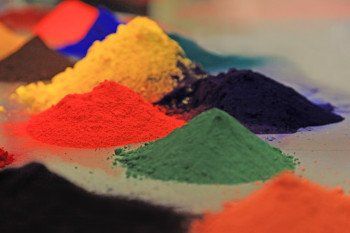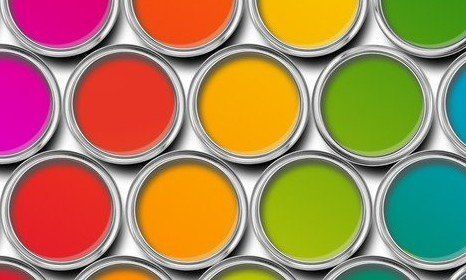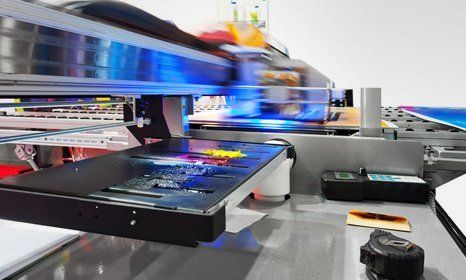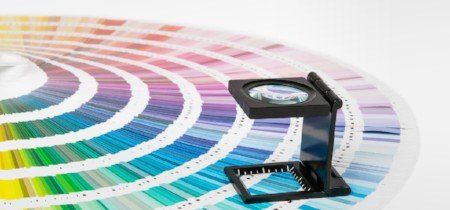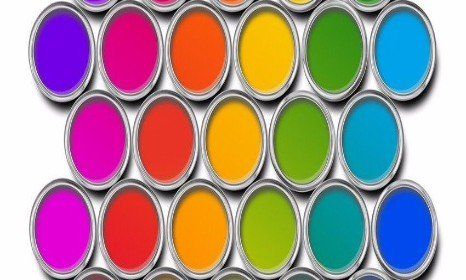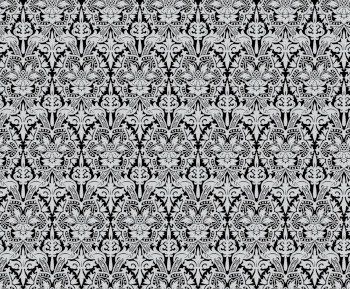What is Lithography?
- By Centre Colours
- •
- 20 Dec, 2018
- •
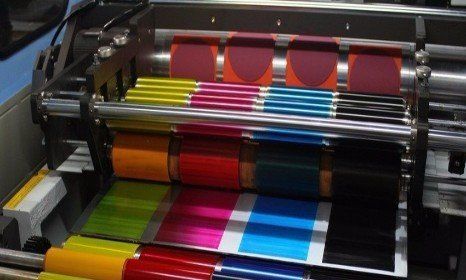
Whether you’re a budding artist or a seasoned printing professional, it’s always advisable to read up on your craft. In a world where new ideas are being implemented and technological advancements are constantly being made, it’s extremely important to stay up to date to prevent your business from falling behind.
Here at Centre Colours, we manufacture and supply quality paints and inks for businesses of all sizes, and our pigment dispersions are second to none. When it comes to printing, we understand that impeccable quality is a must. In order to print visually appealing and highly detailed images, it’s imperative to not only use concentrates of a superior quality, but to also pick a method that will achieve the best results. Lithography is a popular printing technique that has been adopted by many for hundreds of years. Although a relatively complex process, lithography has the ability to produce stunning prints with unbelievable detail and accuracy.
Those in the ink, paint or coating industries will likely be familiar with the process of lithography, however its fascinating history is not to be bypassed. With this in mind, we’ve delved deep into how lithography has evolved through time and how it is used commercially today. So whether you’re new to the industry and require some guidance or you simply want to discover more about one of the most popular methods of printing, read on and immerse yourself in the world of lithography.
What is lithography?
The term ‘lithography’ is derived from the Greek words lithos, meaning ‘stone’ and graphein, meaning ‘to write’. It is a process of printing that relies on the immiscibility of grease and water to create a high-quality print of an existing image. Typically, the image will be drawn directly on to a flat slab of stone or metal plate using specialised pencils. Ink is then applied to the image; the blank areas of the image will repel the ink whereas the drawing will hold it. A piece of paper (or an alternative material) will then be laid upon the image and the slab will pass through the litho press to print the image onto the paper. Lithography is ideal for medium to long printing runs and is utilised to print magazines, books, posters, packaging, maps and much more.
The history of lithography
Lithography was first invented back in 1796 by a German author named Alois Senefelder. As he was also an actor, he used lithographic methods as a simple and cost-effective way to publish theatrical works.
Lithography then became a popular method of printing adopted by artists in the 1800s. The French artist Honoré Daumier was one of the first people to test out transfer lithography- a slight alteration to the process in which the drawing is done on paper before being transferred to the stone.
In the second half of the 19th century, coloured lithographs started to be produced using different coloured inks. These inks would be applied directly to the plate and would create an almost watercolour like image. This was an ideal technique to use for prints of landscapes, but it didn’t always produce the highest quality image. However, the technique was then significantly perfected toward the end of the century.
By 1853, the method had advanced with the introduction of ‘offset lithography.’ This involved an image initially being printed on a rubber cylinder before it was then transferred onto paper. The versatile nature of this method allowed for images to be printed on a wide range of materials including tin, wood and leather. In the 20th century, famous artists such as Pablo Picasso brought the process to life and made lithography a widely used printing process the world over.
Today, lithography is an extremely dominant method of printing. It accounts for over 40% of all printing, packaging and publishing and is widely used by many artists. Although the use of lithography has the potential to produce quality and intricately detailed prints, the materials used are integral to producing a flawless end product.
Litho concentrates
The saying that ‘a workman is only as good as his tools’ couldn’t be more true when it comes to lithography. In order to produce a stunningly flawless image, it’s imperative not to compromise on ink quality. Here at Centre Colours, we pride ourselves on producing the best paste ink concentrates. An advanced range of concentrates will be blendable to produce a wide range of vibrant colours to ensure the quality of your prints is not compromised.
The ink manufacturing process is crucial to the quality of the product. The pigment is arguably the most important part of the ink and the breakdown of pigment particles is pivotal. This process is defined as ‘pigment dispersion’ and the right amount of dispersion can have an effect on many aspects of the ink including colour strength and ink flow.
When it comes to ink mixing, pigment dispersion is vital to creating an ink that is fit for purpose. To find out more about what we offer our customers in terms of litho concentrates, visit our website for an in-depth breakdown of our services.
Lithograph art
As previously mentioned, lithograph methods have been adopted by artists to produce vibrant and detailed prints of their work. In the 20th century, a group of artists (including Pablo Picasso) revived the art of lithography by experimenting with and exploring the process in great depth. This was in part down to Mourlot Studios- a print shop in Paris owned by the Mourlot family. Originally, the shop specialised in printing wallpaper, however their expertise was set to widen. Fernand Mourlot (the owner’s grandson) invited these artists to work hard in order to truly understand and master lithography. The combined expertise of artists and printers made for an extremely exciting venture and once this happened, lithography truly began to flourish.
Now, many artists produce prints using lithographic methods and with this, the process has advanced and updated over time. One way in which this has become apparent is the cross use of lithograph and serigraph processes to create prints. Serigraph or ‘silk screen’ printing is a stencil based printing method in which ink is forced through a screen onto paper. The combination of these two print processes can be used to create unique mixed media prints and the technique has been adopted to create fine art limited print works.
Here at Centre Colours, pigment dispersions are our forte and we work to ensure that you’re 100% happy with the application and colour of your ink.
We understand that quality and reliability are two very important values in the ink, paint and coatings industries. That’s why we promise to deliver quality paste inks to our customers in a timely fashion so as not to hinder your business. In addition to this, our broad range of products and solutions means we are able to accommodate the various needs and requirements of our customers. Whether you’re a large scale business or a small startup, we’ve got you covered.
To find out more about how Centre Colours could help you, why not contact us today? Each member of our team has a wealth of experience in the industry and will be ready and willing to answer your queries.





